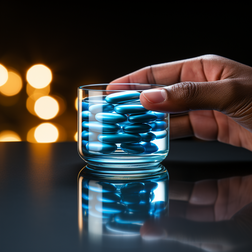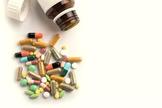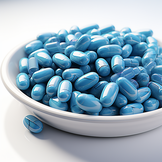Does cycling affect erectile function?
- The Intersection of Cycling and Erectile Function
- The Impact of Bike Seat Pressure on Blood Flow
- Contradictory Research: The Large Study of 5000 Men
- Precautions and Recommendations for Preventing Cycling-Induced Erectile Dysfunction
- The Perineum and Its Role in Erectile Function
- Duration of Cycling and Its Relation to Erectile Dysfunction Risk
- Factors Influencing the Risk of Erectile Dysfunction in Cyclists
- The Norwegian Study on Cyclists and Erectile Dysfunction
- Importance of a Healthy Weight and Lifestyle in Maintaining Erectile Function
- Cycling and Testosterone
- Exercise and Erectile Function

The Intersection of Cycling and Erectile Function
Physical exercise is paramount to maintaining a healthy lifestyle, and cycling is one of the most popular forms of exercise worldwide. However, questions have been raised about whether cycling can impact erectile function, particularly among men who cycle frequently. The concern centers primarily on the fact that sitting on a bicycle seat for long periods can put pressure on the perineum, a sensitive area between the anus and the genitals, which is rich in blood vessels and nerves that are crucial to erectile function.
The Impact of Bike Seat Pressure on Blood Flow
The heart of the problem lies with the narrow bike seat, which can restrict blood flow to the penis. One study found that the pressure exerted on the perineum by a narrow bike seat could decrease blood flow to the penis by as much as 66%. However, the same research also discovered that a broad seat only reduced blood flow by 25%, underscoring the importance of seat design in maintaining adequate blood circulation.
Contradictory Research: The Large Study of 5000 Men
Despite concerns, the link between cycling and erectile dysfunction (ED) isn't entirely clear. A large study of 5000 men with a ten-year cycling history found no significant link between cycling and ED. However, this study didn't consider the specific aspects of cycling that might contribute to ED, such as seat design or cycling duration, which could have influenced the results.
Precautions and Recommendations for Preventing Cycling-Induced Erectile Dysfunction
While the connection between cycling and ED remains under investigation, there are practical steps cyclists can take to mitigate potential risks. Using a wider bike seat and adjusting the seat to the proper height and angle can reduce pressure on the perineum and promote better blood flow. Wearing padded shorts can also provide additional cushioning, and making sure to take regular breaks during long rides can help preserve vascular and nerve health in the perineum. Pedal selection can also impact pressure distribution during cycling, so consider investing in pedals designed for comfort and anatomical alignment.
The Perineum and Its Role in Erectile Function
The perineum is a region of the body located between the anus and the genitals, and it plays a crucial role in erectile function. It houses a network of blood vessels and nerves that, when properly stimulated, lead to an erection. Because of its location and sensitivity, prolonged pressure can lead to numbness and impact blood flow, potentially leading to ED.
Duration of Cycling and Its Relation to Erectile Dysfunction Risk
The amount of time spent cycling might influence the risk of ED.
A study of 160 men by Norwegian researchers involved a questionnaire following a 324-mile bike tour.
It found that 13% reported numbness in the genitals, highlighting the potential risk of longer rides.However, it's important to note that this numbness is temporary and generally resolves once pressure is removed.
Factors Influencing the Risk of Erectile Dysfunction in Cyclists
Multiple factors influence the risk of cycling-induced ED. In addition to seat design and duration, larger body weight can increase the pressure exerted on the perineum. Additionally, cycling for more than three hours a week has been associated with an increased risk of numbness and potential erectile problems.
The Norwegian Study on Cyclists and Erectile Dysfunction
A Norwegian study involving 160 men provided valuable insights into the link between cycling and erectile function. The researchers gave the participants a questionnaire after a 324-mile bike tour. About 13% of the men reported genital numbness, and 21 men (roughly 13%) admitted to experiencing erectile issues. This study is significant as it provided a snapshot of the potential short-term impact of intense, prolonged cycling on erectile function.
Importance of a Healthy Weight and Lifestyle in Maintaining Erectile Function
While it's important to be aware of the potential impact of cycling on erectile function, maintaining a healthy weight and lifestyle is also crucial. Physical activity, including cycling, can contribute to weight management and overall health, reducing the risk of many health problems, including ED. A healthy diet, limited alcohol consumption, and abstaining from smoking are other lifestyle choices that can significantly improve erectile function.
Cycling and Testosterone
As far as the relationship between cycling and testosterone is concerned, cycling has not been shown to negatively affect testosterone levels. Instead, regular exercise, such as cycling, can boost testosterone levels and improve overall sexual health.
Exercise and Erectile Function
As for the best exercises for erectile function, these can include both aerobic exercises like cycling and resistance training. Regular physical activity improves blood flow, lowers blood pressure, and boosts overall cardiovascular health, which are all crucial to maintaining healthy erectile function.
In conclusion, while concerns exist over a potential link between cycling and erectile dysfunction, the relationship is not entirely clear. Factors such as seat design, duration of cycling, and individual lifestyle factors can influence the risk. Practical steps, including using a wider bike seat, taking regular breaks, and maintaining a healthy lifestyle, can mitigate potential risks. With the right precautions, cycling can remain a healthy, enjoyable, and beneficial form of exercise.



